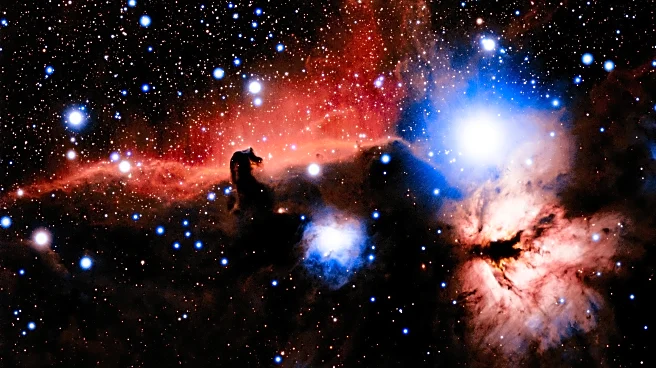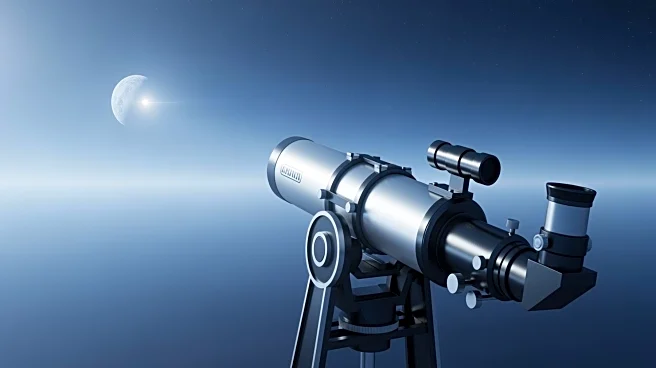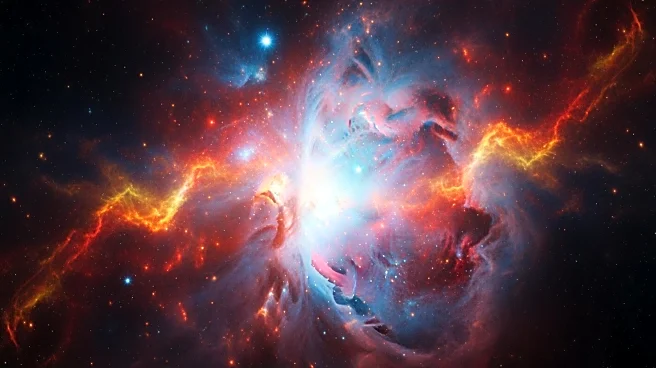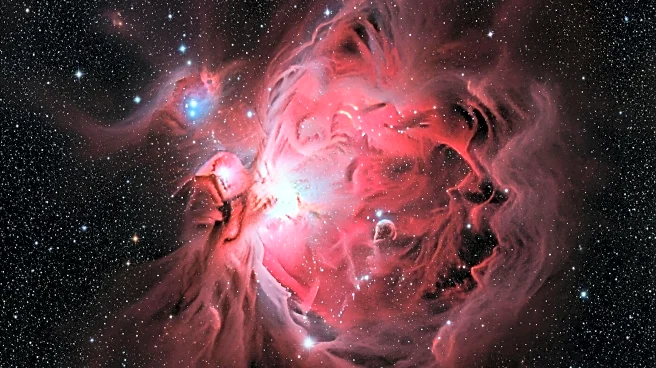What's Happening?
Comet 3I/ATLAS, an interstellar visitor, is displaying unexpected behavior as it nears its closest point to the Sun, known as perihelion. Observations from space-based observatories, including solar-monitoring
satellites, have revealed that the comet's brightness has increased significantly, far exceeding typical rates observed in other comets. This rapid brightening is attributed to the comet's unique composition and its journey through interstellar space. The comet's blue hue suggests that gases, rather than just dust, are contributing to its brightness. Researchers are intrigued by these findings, as they challenge existing understanding of cometary behavior.
Why It's Important?
The unusual behavior of Comet 3I/ATLAS provides a rare opportunity for scientists to study an interstellar object in detail. Understanding the composition and behavior of such comets can offer insights into the conditions and materials present in other star systems. This knowledge could have implications for our understanding of the formation and evolution of comets, as well as the broader dynamics of interstellar objects. The comet's rapid brightening and unique coloration may also inform future studies on the interaction between solar radiation and cometary materials.
What's Next?
As Comet 3I/ATLAS emerges from behind the Sun, ground-based observers will have the chance to study it more closely. This will allow for further analysis of its composition and behavior, potentially leading to new discoveries about interstellar comets. Researchers will continue to monitor the comet's activity and brightness, seeking to understand the underlying causes of its unusual characteristics. The findings from these observations could contribute to a broader understanding of cometary science and the nature of interstellar objects.












